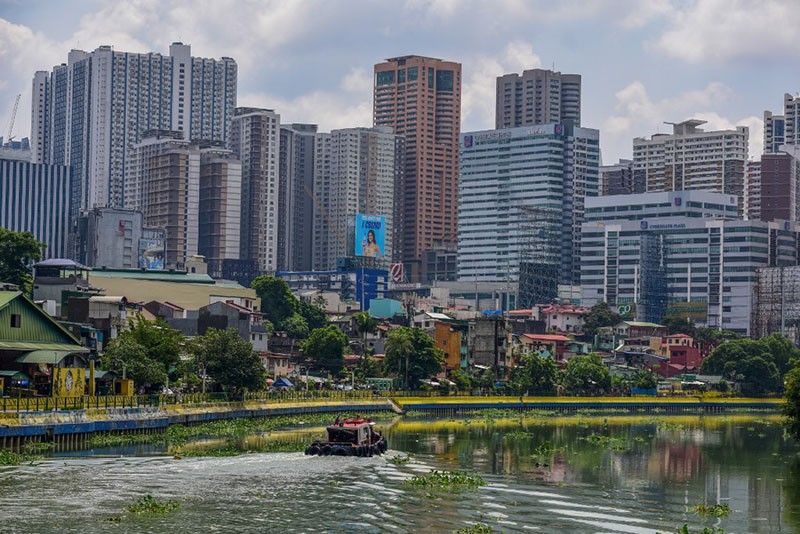Philippines needs more investments in manufacturing

“Governments that don’t satisfy their constituents don’t remain governments very long,” wrote Harvard professor Jeffry Frieden in his paper "The Political Economy of Economic Policy" published in the 2020 issue of the Finance and Development magazine of the International Monetary Fund (IMF). Understandably, governments try to find ways to meet at least the minimum expectations of their constituents, in good times or bad times.
Recently, the think tank Stratbase ADR Institute held its second business roundtable discussion this year, entitled, “Reinvigorating the Philippine Manufacturing Sector for Job Creation”. Featuring key stakeholders from the government and the business community, the forum revolved around promoting investments in manufacturing to spur job creation as well as sustainable and inclusive growth.
In 2022, the net inflows of foreign direct investments (FDIs) into the Philippines amounted to only US$ 9.2 billion, according to the Bangko Sentral ng Pilipinas (BSP). The Philippines clearly lagged behind its other Southeast Asian neighbors: Thailand (US$ 10.0 billion); Malaysia (US$ 15.1 billion); Vietnam (US$ 17.9 billion); Indonesia (US$ 21.7 billion); and Singapore (US$ 140.8 billion). This trend indicates that investors were overlooking the Philippines’ inherent advantages in geographic location, natural resources, language facility, population demographics, and education.
The low FDI count comes amid the perennial trade deficit that, on record, has been widening for the past several years, with the Philippines spending more foreign exchange to pay for imports than it received for its exported products. All this time, the Philippines had been importing more goods than exporting, with China benefiting most from the trade imbalance.
In view of a looming cost-of-living crisis, which is the most severe crisis threatening the world within the next two years according to the World Economic Forum’s Global Risks Report 2023, the Philippines has to recalibrate its growth strategies to mitigate the impact of slowing global economic growth and anticipated crises resulting from natural disasters, inflation, and supply chain disruptions that lead to commodity shortages.
Hence, a practical measure is to push for increased local production of goods needed by the domestic market in order to lessen the need for imported goods. For decades, government interest zeroed in on export-producing industries in order to generate more foreign exchange. As such, export-oriented companies were afforded various incentives. While there is nothing wrong with that, it is important to note that Philippine exports remain low, and the country’s total trade being dominated by imported goods.
The traditional way of producing goods employs processes that destroy the environment. Hence, it is high time that the government incentivizes manufacturers to consciously shift to new and innovative technologies that are sustainable and beneficial to the environment, such as energy strategies that complement base load capacities with the use of renewable energy and the recycling wastes into new raw materials.
Small and medium enterprises (SMEs) should also strengthen themselves as regular partners of large manufacturers in supplying or providing primary or secondary inputs for production, instead of the latter sourcing materials from overseas suppliers.
If FDIs are slow in coming in, it might also be a good idea to tap the financial resources of domestic investors to fill in the gap. For decades, remittances from overseas Filipino workers (OFWs) helped fuel a consumption-driven economic growth.
With the right government policy and incentives, these OFW remittances, along with the resources of corporate sector retirees and other people with some resources, can be pooled to power up domestic investors into producing goods needed by the domestic market. This could help transition the economy from a largely consumption-driven growth to a more investment-led expansion that, ultimately, should lead to inclusive growth.
All these strategies need policy direction emanating from the national leadership and appropriately supported by the business community, civil society and the academe. This policy direction naturally begins with the cost of doing business. Corruption, bureaucratic red tape, smuggling, high inflation, ever-changing government regulations, power and energy, and labor costs all contribute to driving up business costs.
Encouragingly, the majority of the Filipino public has a positive sentiment on the potential of the country’s manufacturing activities in contributing to economic growth and development. As presented by Pulse Asia Research Inc. President Dr. Ronald Holmes during the Stratbase ADR Institute forum, a survey commissioned by the Stratbase ADR Institute during the first quarter of 2023 found that 89% of Filipinos agree that the government should support the manufacturing sector, having been viewed as capable to accelerate the country’s economic growth and development.
In particular, Filipinos perceive manufacturing activities as crucial in creating livelihood opportunities for local business services needed to support manufacturing operations (62%) and making goods more affordable and accessible to Filipino consumers (62%). In this light, the top three actions identified by respondents that the government should carry out to boost the growth of the country’s manufacturing sector are to provide opportunities for training to workers to upgrade or learn new work skills (61%), provide more incentives that are competitive to other countries (50%), and to develop more economic zones (45%).
But then again, the country’s manufacturing activities need to be at par with other countries by adopting technological advancements to become competitive. As what Department of Trade and Industry (DTI) Undersecretary Rafaelita Aldaba stated: “Structural change through a new industrial policy that is science, technology and innovation-based is needed to make our industries competitive and create an environment that is conducive to private sector development.”
Ultimately, there is no better choice but to engage in collaborative effort to overcome the socio-economic challenges on the ground. As an old saying goes: when the tide rises, all the boats in the sea are lifted as well.
Venice Isabelle Rañosa is a research manager at think tank Stratbase ADR Institute.
- Latest
























